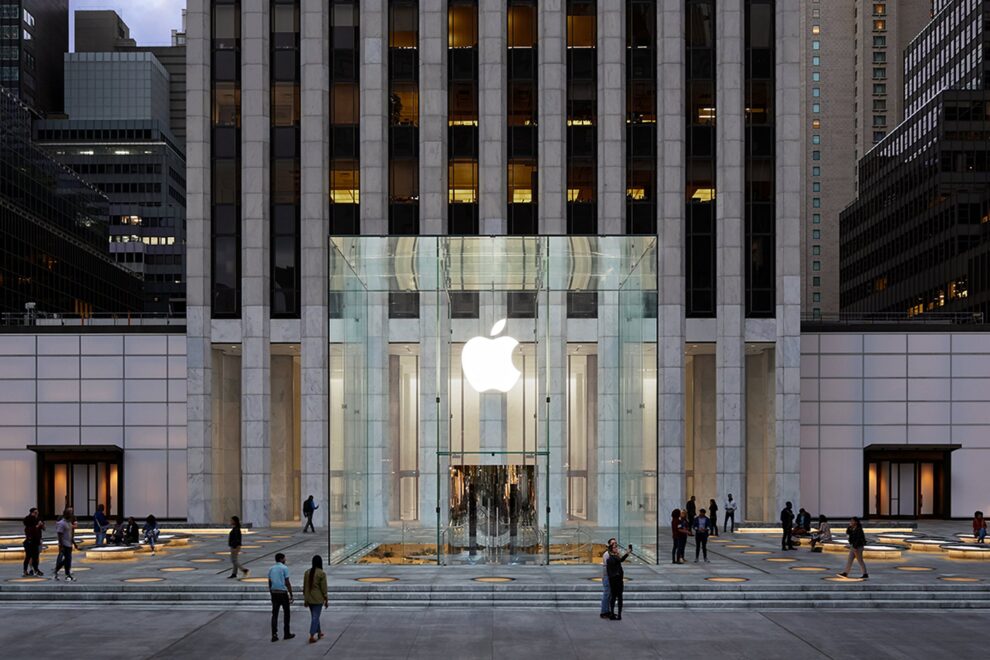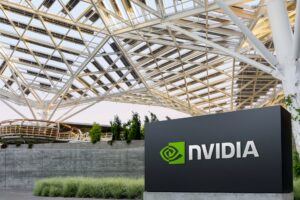The tech giant could struggle to stay ahead of the red-hot chipmaker.
Nvidia‘s (NASDAQ: NVDA) market cap exceeded Apple‘s (AAPL -1.27%) for the first time in more than two decades on June 5. The chipmaker’s market cap reached $3.01 trillion at the end of the day, compared with Apple’s market cap of $3.00 trillion, and made it the world’s second most valuable publicly listed company after Microsoft.
As of this writing, Nvidia’s valuation has pulled back to $2.97 trillion as Apple’s valuation rose to $3.02 trillion. But based on Nvidia’s recent growth trajectory, it could easily overtake Apple again and close in on Microsoft’s $3.15 trillion valuation. So can Apple maintain its position as the world’s second most valuable company through 2025?

Image source: Apple.
Why is Apple’s growth slowing down?
From fiscal 2013 to fiscal 2023, which ended in September of last year, Apple’s revenue grew at a compound annual growth rate (CAGR) of 8% as its earnings per share (EPS) increased at a CAGR of 16%.
That growth was driven by its robust sales of iPhones (especially the iPhone 6 in 2014 and the 6S in 2015), the Apple Watch’s launch in 2015, and the expansion of its services ecosystem. It also bought back more than a third of its shares over the past ten years. But over the past two years, Apple’s growth engines gradually cooled off.
In fiscal 2023, its revenue declined 3% as its EPS stayed nearly flat. That deceleration was caused by the end of the 5G upgrade cycle for its iPhones, sluggish sales of Macs and iPads in a post-pandemic market, and tough currency headwinds.
For fiscal 2024, analysts expect Apple’s revenue and EPS to rise just 1% and 8%, respectively, as its iPhone sales stabilize, its Mac sales rise again, and it expands its services division. However, those are arguably tepid growth rates for a stock which trades at 27 times forward earnings. Its recovery could also be derailed by its market share losses in China, competitive challenges in India, and antitrust investigations of its services division in the U.S. and Europe.
So for now, Apple’s valuation doesn’t seem to be supported by its near-term growth rates. Instead, investors still seem to be paying a premium for it as a safe haven stock in a high interest rate environment. With $162 billion in cash and marketable securities at the end of its latest quarter, Apple can easily weather the near-term headwinds, buy back more shares, raise its dividend, and continue to expand through smart investments and acquisitions. Its plans to integrate OpenAI’s generative artificial intelligence (AI) services into its own first-party services could also keep it in the AI race.
But it could struggle to stay ahead of Nvidia
Apple’s deceleration coincided with Nvidia’s acceleration. Back in fiscal 2023, which ended in January of that year, Nvidia’s revenue growth flatlined and its adjusted EPS fell 25%. That slowdown was mainly caused by its weak sales of gaming GPUs for PCs in a post-pandemic market and macro headwinds for the data center market.
But in fiscal 2024, Nvidia’s revenue and adjusted EPS soared 126% and 288%, respectively. That acceleration was driven by its skyrocketing sales of data center GPUs for AI applications. The growing popularity of OpenAI’s ChatGPT and other generative AI platforms caused the market’s demand for those chips to quickly outstrip its available supply. Analysts expect its revenue and adjusted EPS to grow 98% and 109%, respectively, in fiscal 2025.
Nvidia can’t maintain those hypergrowth rates forever — and it will probably face more competitive and regulatory headwinds over the next few years — but its stock still looks reasonably valued at 47 times forward earnings. So if its data center GPU business keeps firing on all cylinders, its stock could have a lot more upside potential than Apple’s.
Apple probably won’t be worth more than Nvidia by 2025
Analysts expect Apple’s earnings to grow 10% in fiscal 2026. If it’s still trading at 27 times forward earnings, its stock price could rise to $215 at the end of calendar 2025, which ends in September of that year. That would only boost its market cap to around $3.3 trillion.
Nvidia’s adjusted earnings are expected to increase 33% in fiscal 2026. If it’s trading at 47 times forward earnings, its stock would be trading at about $170 with a market cap of nearly $4 trillion at the end of calendar 2025.
So even if their valuations cool off, Nvidia has a clear shot at eclipsing Apple’s market cap again next year. That said, investors shouldn’t forget that Apple has a solid track record of recovering from its cyclical downturns and reinventing itself with fresh products and services — so it’s far too early to claim that its business has fully matured.
Leo Sun has positions in Apple. The Motley Fool has positions in and recommends Apple, Microsoft, and Nvidia. The Motley Fool recommends the following options: long January 2026 $395 calls on Microsoft and short January 2026 $405 calls on Microsoft. The Motley Fool has a disclosure policy.









